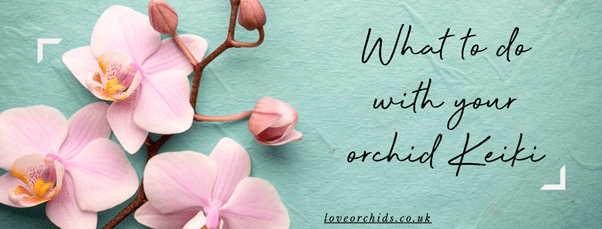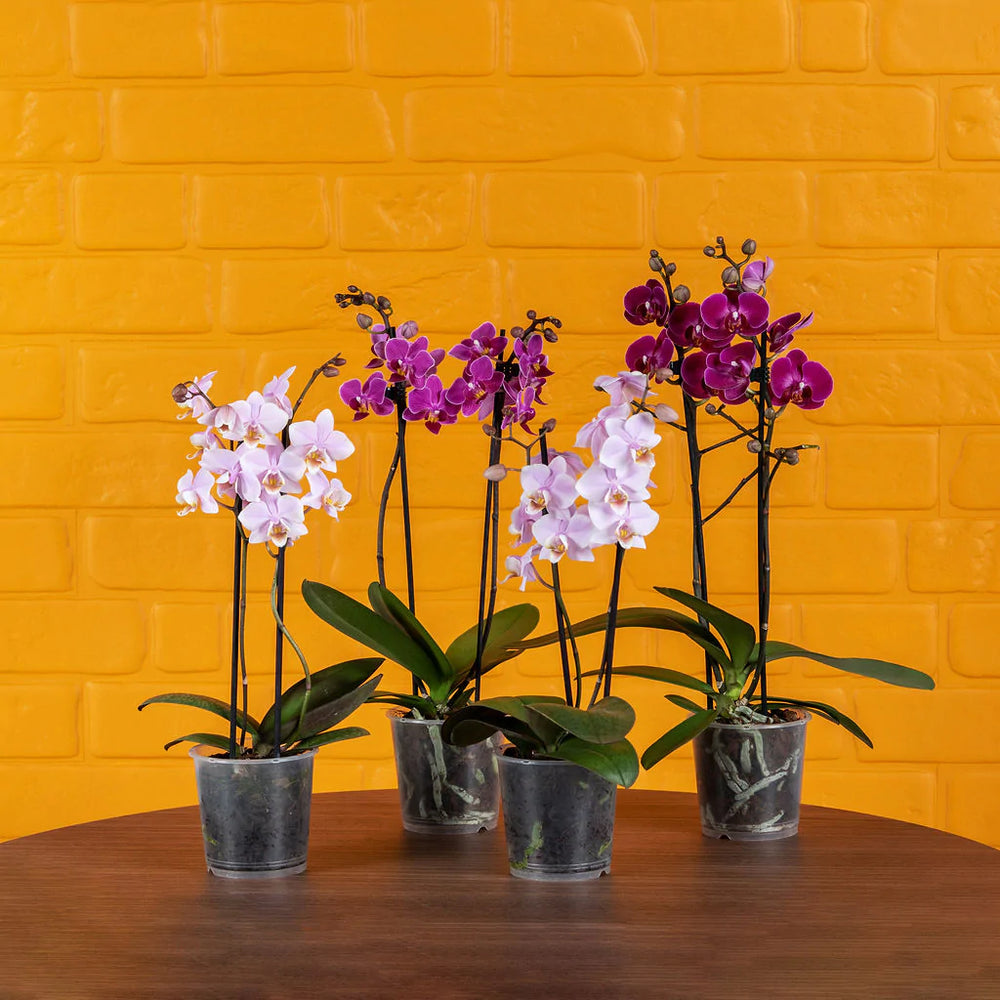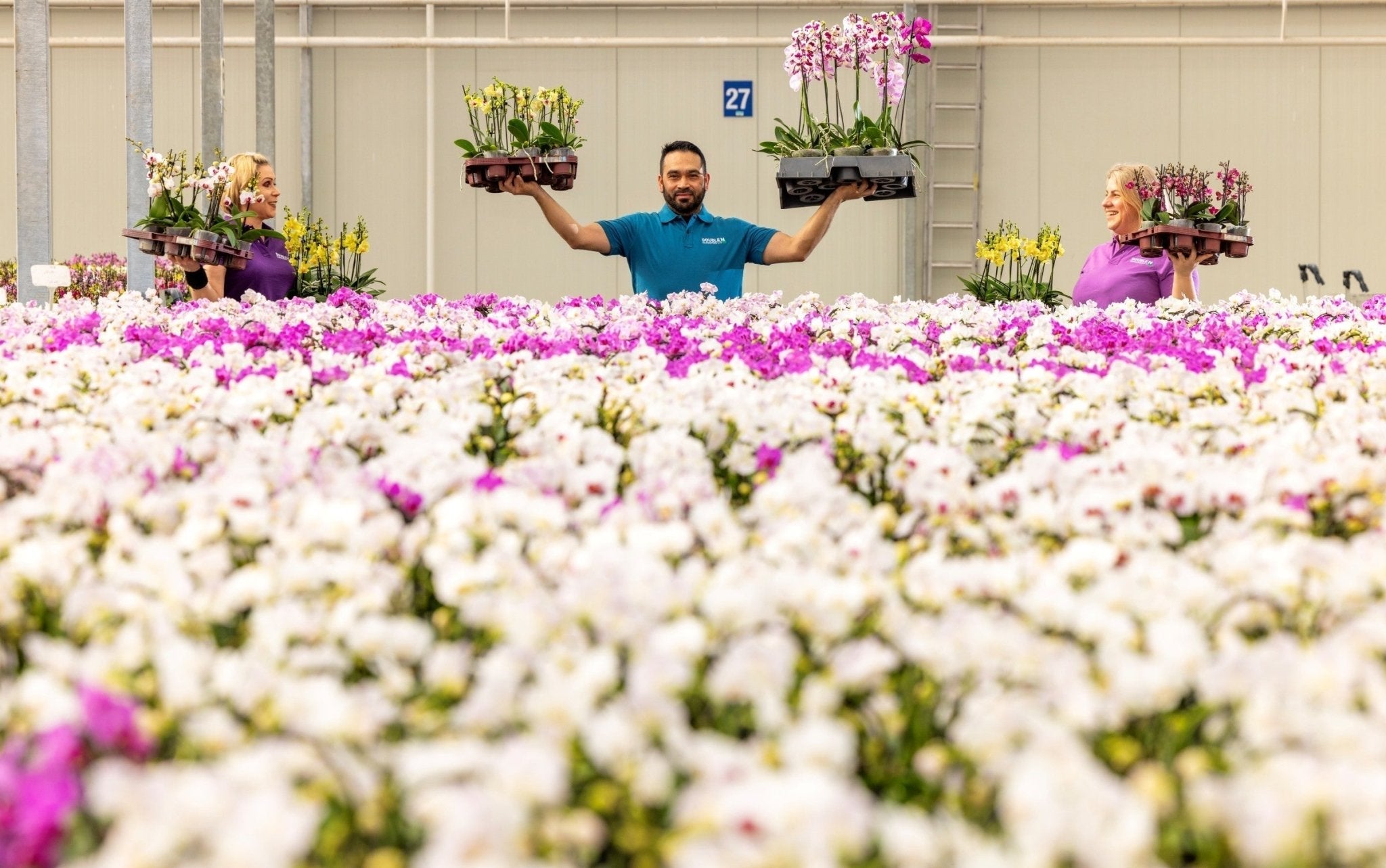What Do You Do With Orchid Babies?

Orchids will produce tiny plantlets or babies known as "keikis". Here's how to pot and care for one to get you growing more orchids.
Firstly; What is an orchid baby?
Orchids will occasionally sprout a baby plant, or keiki from its flower stems or pseudobulb. "Keiki" directly translates from Hawaiian to "the little one", and that's exactly what theses are - little orchids. It's not unusual for people to wonder what to do when this happens as keikis are very common on phalaenopsis orchids. The keiki will be genetically identical to the mother plant and so will bear the same colour flowers too.

Why Are Keikis Produced?
Mature orchids may start to produce keikis for an array of reasons. For example, phalaenopsis orchids will often tend to create a keiki when the plant is stressed - this is because the plant may fear it is dying and so asexually reproducing and sprouting a keiki is its best way of passing on its genes and saving its species.
Other times however, your orchid may just be so healthy and happy that it has plenty of energy to produce a new plant.
It's very difficult to know whether the keiki is a result of good care and with an excess of growth hormones, or if your plant is under a lot of stress. A good indicator is if there is a flower spike alongside the keiki, but if you're not sure, check the basics of orchid care. Temperature, air flow, sunlight, humidity, feed watering and potting mix (this is a biggy - if you've recently repotted your orchid to a medium your orchid is unfamiliar with can cause problems!) will all need to be optimal for a keiki to be produced from a happy orchid plant.
How to Identify A Keiki?
Keiki look like small plants growing on the stem of the mother plant. On phalaenopsis orchids these will usually occur on the nodes along the length of the stem.
Try not to confuse a keiki for normal orchid growth, orchids will produce flower spikes and new leaves constantly throughout its lifespan, especially if you don't cut back the old flower spike after its blooming period. Leaving the spike will naturally induce another bloom whereas cutting back the flower spike will prevent any new growth from that spike. However, sometimes it is not a bloom that this will produce.

A keiki is very different to a new spike, mainly in that it will start to produce its own leaves and roots. They tend to start off looking like a new flower spike but after a few months these roots and leaves will start to sprout from the growth and not from the mother plant.
You can also watch a helpful video on identifying these from our own orchid expert, Malcom, on our Facebook page!

What Do You Do With Your Orchid Baby?
Just like any baby, keikis need special care and attention to aid them growing into beautiful mature orchids.
If you spot a keiki growing on one of your orchids the first thing you should do is check the health of the mother plant. With keikis often being produced through stress, a new plant might be a sign that your orchid needs some extra help. There are two main factors to look at for phalaenopsis especially;
- Is the temperature too high?
- Is the orchid receiving not enough light?
Once you have checked the health of the mother plant, you must then decide if you want to keep the keiki. These will eventually grow into a completely separate plant but they will draw resources away from the mother whilst still attached. Some experts do recommend keeping the mum and baby together into maturity while others suggest removing slightly earlier to let the mother plant thrive.
How To Remove The Keiki;
If you don't wish to keep your keiki, simply cut off with a sharp and sterile blade and dispose of it. If you would like to prevent any more keikis from forming, it might help to cut back the mother orchid's spikes after the bloom period. Sprinkle some cinnamon, which is a natural fungicide, on any open cuts to prevent risk of infection and disease.
Growing Your Keiki
To optimise your chances of growing a healthy orchid child, you shouldn't remove it from the mother until the roots are around 2-3 inches in length. Once your keiki has reached this point, use a sharp sterile blade and cut the mother's stem around 2 inches below the keiki. Apply cinnamon or any other natural fungicide to the open cuts of both the baby and mother as an added precaution.
Once your keiki is separated and on its own you will need to pot it. We recommend a 7cm clear grow pot and fresh potting medium. You will want to gently but firmly push the roots into the mix and then water thoroughly. Moisture is crucial to the health of a baby orchid so you want to ensure you have enough of it ( also using a mix of damp sphagnum moss instead of bark potting mix is great as this will naturally attract water). Using a "humidity tray" if also very handy for ensure your plant is receiving the optimal humidity for growth.

Even a fully-grown orchid can decline if it is exposed to too much sunlight and you should be extra careful with the placement of your baby plant. Keiki's need less light than mature orchids so it's best to place your newly potted plant in a north or east-facing window or on a table just far away from too much direct sunlight. Make sure to keep an extra close eye on you baby plant in the early few months to ensure its thriving as best it can be.
Top Tips on Keiki Care!
Keikis are a lovely addition to any orchid family and following our top tips will make sure you are giving them all the TLC they need to blossom from little mini orchids into healthy mature orchids.

- Mist Your Orchid Baby Daily! - If you don't have a humidify or humidity tray, make sure you water you orchid daily to make sure it is able to retain the proper moisture it needs to grow big and strong. Don't let the plant get to moist though as soggy potting mix can hinder growth. Also be sure to avoid misting the area where the leaves meet the stem as them can lead to crown rot.
- Use A Clear Grow Pot! - These pots allow you to monitor the moisture level closely as well as the health of the roots. Some believe that the clear pots also allow for the roots to photosynthesize which will help improve the overall health of your orchid.
- Wait To Fertilize! - you shouldn't use any form or fertilizer until the orchid is well established in its pot as this could shock the keiki after an already traumatic separation form the mother plant. Once the leaves show a little growth this will indicate you plant is happy and starting to thrive in its new home. Only then should you add a fertilizer formulated specifically for orchids. Potentially watering down the fertilizer slightly to not over do it.
- Add A Support! - Once you've moved the keiki into its new pot you may want to add some sort of support to keep it standing upright, a craft stick or wooden skewer usually do the trick!
- Gradually Expose To Light! - You have to be careful not to expose your orchid child to too much direct early on. This can prevent you from having a successful orchid transplant. Once the keiki is established in it own pot, slowly expose it to bright light (not direct sunlight!) as it begins to grow more you can start increasing the amount of light every few days until it is growing happily in a similar area to its mother plant.
Lastly and most importantly - Be Patient! - your keiki can take up to 3 years before it begins to flower and how quickly you start to see blooms can depend on the variety of orchid you have. You also should bare in mind that your orchid keiki is growing in very different conditions to that of its mother plant or of orchids in their natural environment. These suboptimal conditions can slow down the orchid blossoming but don't fret, be proud that you have made it this far as orchid growing is no easy task! You'll have yourself a mini orchid in no time!




